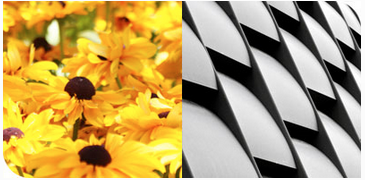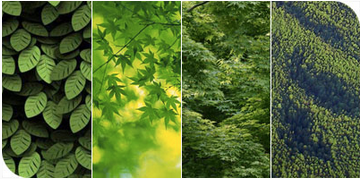Elements of Design
Texture
Texture refers to the real or implied surface quality of a visual composition. All surfaces have texture. Surface textures can range from the roughest mountain range to the smoothest polished mirror, much like the elephant skin and leaf surface shown on the right.

Various textures can make an image more interesting in various ways. Some surfaces are inviting; others are not. The textures that suggest those surfaces invite similar responses. However, texture is not a strong enough element to be useful for organizing a composition. Value and colour contrasts are more effective for that purpose.
Real (tactile) texture is the actual feel of a surface. This is most important in three-dimensional design (form), but it is of only moderate interest in two-dimensional design (shape). Examples of this include sandpaper, cotton balls, tree
bark, fur.
Implied (visual) texture is the illusion of the texture, or how texture appears on a 2D surface. The textures you see in a photograph are visual textures. No matter how rough objects in the photograph look, the surface of the photograph is smooth and flat.

Pattern changes to texture when we lose sight of individual motifs. This is easy to do with natural patterns, but we have to be quite far away from a building grid to see it as texture.

All patterns have texture, but not all textures have pattern.
Generally, patterns are more noticeable than textures are. This makes them a stronger visual element for controlling attention.